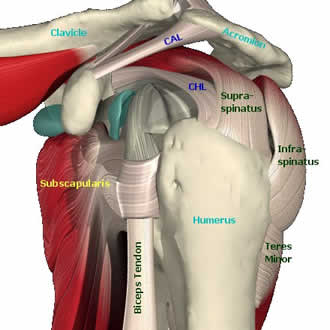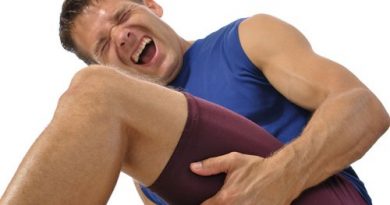Rotator Cuff Injuries
Rotator cuff injuries are very common in youth sports and on the college and professional level. Football players are especially vulnerable to rotator cuff injuries because of the motions and movements required to play football.
The rotator cuff is made up of four muscles. The teres minor, supraspinatus, infraspinatus, and subscapularis. See the picture above.
This is not to be misconstrued as medical advice, please see your physician for more information.
When someone injures their rotator cuff, it’s usually supraspinatus that is injured. It usually happens when falling on an outstretched arm or while lifting weights improperly. Falling on an outstretched arm is a common occurrence during most football games. We have had plenty of our athletes injure their rotator cuffs. It happens mostly when they are carrying the football and got tackled, and landed on the elbows with the ball cradled in their arms. The other most common way it happens is when landing on one arm falling sideways.
So what do you do?
Usually physicians will send you to physical therapy and rehabilitation. Rehab and therapy can be very painful and may cause more damage. In physical therapy, they make the injured player stretch, move, and use the shoulder. This is usually very painful and unnecessary. When we send our athletes to rehab it takes well over 6 months to heal.
We have found that sometimes not doing anything allows the shoulder to heal faster. Over the years, some of our athletes refused to go to rehab, and we found that they actually healed faster. Usually, within a month.
We never understood why this was the case. Rehab is supposed to make you heal faster right? Why did our athletes heal faster when they avoided rehabilitation, even though the injury was worse?
Finally, we got our answers when talking and training with Dr. Robert Kappler, the 1985 Chicago Bears team doctor. He discussed and treated rotator cuff injuries extensively and we were in awe. It made so much sense.
First he explained how to diagnose a rotator cuff injury. You hold out your arms in front of you with your thumbs down.
The doctor pushes down on your wrist or hand. If you can’t keep your arm up, or it causes pain in the shoulder, then it is a rotator cuff injury. That is the best test for a rotator cuff injury. If you hold your arms out to your sides, you can use your deltoid muscles to hold your arms up. In front like this isolates the rotator cuff.

Dr. Kappler began to explain that sending people to physical therapy made this injury worse and prolonged the healing process. You end up tearing and damaging muscles that already have been damaged. He told us numerous stories about Chicago Bear players injuring their rotator cuffs and recovering very quickly compared to players on other teams. At the time, how he was treating rotator cuffs was revolutionary, but now it is common knowledge. Of course, you still have some trainers and physicians still trying to prescribe rehabilitation for rotator cuff injuries.
To us, this was a revelation. We knew that therapy was bad for your rotator cuff, but we never knew why.
This had confirmed our suspicions. There is no need to send people to physical therapy. Physical therapy usually caused more pain, stressed the muscles and tendons and just made things worse. Obviously, if you are elderly, the fear of frozen shoulder may change your management, but with young athletes, just let the darn thing heal.
So how do you treat rotator cuffs?
1. Anti-inflammatory medications. Two common ones are Naproxen (Aleve) and Ibuprofen (Advil or Motrin) for a while. Just buy the generics, same drug, one third the price. Naprosyn is also called Naproxen Sodium. Take these at higher doses, Naprosyn should be taken at 500mg two or three times per day and Ibuprofen should be taken at 800mg at two or three times per day. Anti-inflammatory medications will calm everything down in the damaged area and allow the tissue to heal. They also help alleviate the pain. WARNING: Do not take these at such high doses for more than 3 days, they can cause kidney damage.
2. Don’t overuse the shoulder or arm. Avoid physical therapy.
3. Let the darn thing heal.
Eventually everything will come back to life and work properly. If your shoulder does not heal and begins to freeze up on you, see your doctor.
This is not to be misconstrued as medical advice, please see your physician for more information.



